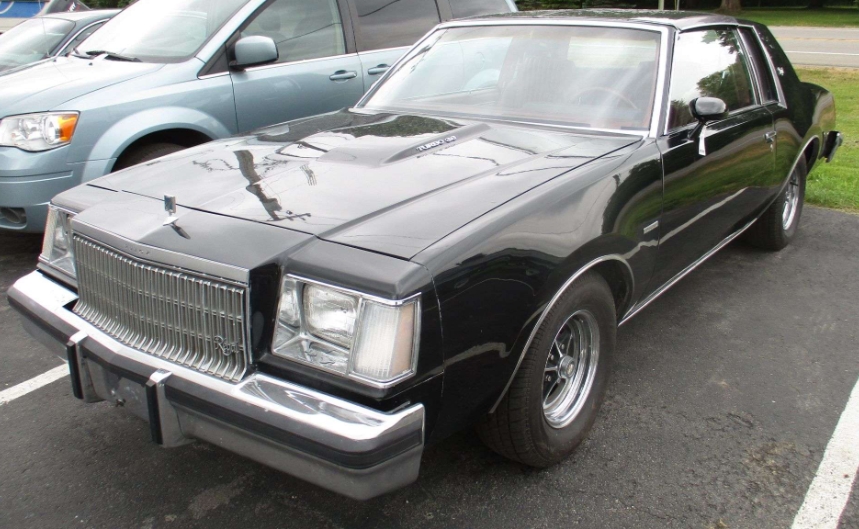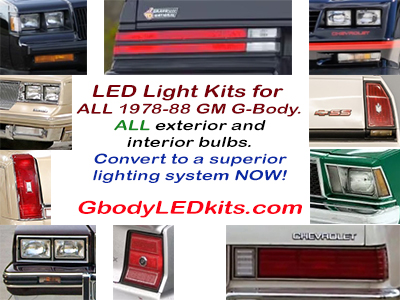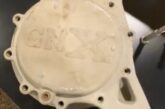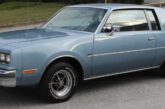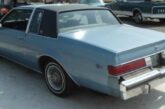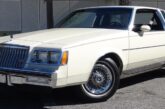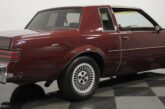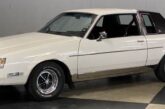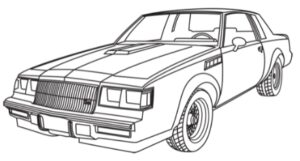1979 Buick Regal Coupe, 1979 Buick Regal Sport Coupe, 1979 Buick Regal Limited.
The year 1979 was a crossroads for the American automotive industry. The unbridled optimism of the 1960s had given way to the complex realities of the 1970s: fuel crises, tightening emissions regulations, and a shift in consumer tastes. In this environment, the “personal luxury coupe”—a stylish, comfortable two-door car—reigned supreme. General Motors, a master of market segmentation, offered its highly successful mid-size A-body platform (soon to be G-body) under four distinct brands. Among them, the Buick Regal stood out, offering a blend of style, comfort, and a touch of performance that perfectly captured the zeitgeist.
For the 1979 model year, Buick didn’t just offer one Regal; it masterfully crafted three distinct models from the same handsome sheet metal: the standard Regal Coupe, the forward-thinking Regal Sport Coupe, and the opulent Regal Limited. While they shared a common foundation, each was tailored for a dramatically different buyer, creating a fascinating case study in automotive marketing and engineering.
The Common Foundation: The Downsized A-Body
Before exploring their differences, it’s essential to understand what all 1979 Regals shared. One year prior, in 1978, GM had radically downsized its A-body platform. The new Regal was over a foot shorter and shed nearly 700 pounds compared to its 1977 predecessor, yet clever packaging yielded more interior and trunk space. All 1979 models rode on the same 108.1-inch wheelbase and featured a traditional body-on-frame construction with a coil-spring suspension at all four corners, ensuring the plush, quiet ride Buicks were famous for.
The base engine for all trims was Buick’s venerable 3.8-liter (231 cubic inch) V6 engine, a powerplant that would become legendary in the decade to follow. Mated to a standard 3-speed automatic transmission, it provided adequate, if not thrilling, motivation for the roughly 3,200-pound coupe. From this shared canvas, Buick painted three very different automotive portraits.
1. The 1979 Buick Regal Coupe: The Accessible Standard
The Vibe: Elegance for the everyday driver. Target Audience: The value-conscious buyer who desired style and comfort without the cost of excessive options.
The standard Regal Coupe was the bedrock of the lineup and the volume seller. It offered the same crisp, formal roofline and handsome proportions as its more expensive siblings but presented them in a cleaner, less adorned package.
Specifications and Features:
- Standard Engine: 3.8L (231 cid) 2-bbl V6, producing 115 horsepower and 190 lb-ft of torque.
- Optional Engines:
- 4.9L (301 cid) Pontiac-sourced 2-bbl V8 (140 hp, 235 lb-ft torque).
- 5.0L (305 cid) Chevrolet-sourced 2-bbl V8 (130 hp, 245 lb-ft torque).
- Exterior: The base Regal was distinguished by its bright chrome grille, standard single headlights (quads were optional), and bright metal moldings around the windows. It rode on 14-inch steel wheels with full, body-colored hubcaps. There was a pleasing simplicity to its appearance, free of the spoilers or excessive chrome of the other trims.
- Interior: Inside, the standard configuration was a cloth-and-vinyl notchback front bench seat, offering room for three across. The dashboard was straightforward, featuring a horizontal speedometer and basic warning lights. Faux woodgrain trim was present but less pervasive than in the Limited. Amenities like power windows, power locks, and air conditioning were all on the extensive options list.
The Regal Coupe was the quintessential American personal car of its time: stylish enough to be proud of, comfortable for daily commuting, and practical enough for a small family. It was the blank slate upon which a buyer could build, adding just enough options to suit their taste and budget.
2. The 1979 Buick Regal Sport Coupe: A Glimmer of Performance
The Vibe: A sophisticated, forward-looking performance car. Target Audience: The enthusiast who missed the muscle car era but appreciated modern technology and a more refined driving experience.
The Regal Sport Coupe was the most radical and historically significant model in the 1979 lineup. It was Buick’s bold statement that performance didn’t have to come from a massive V8. Instead, Buick embraced turbocharging, a technology that was exotic for a mainstream American car at the time. This car was the direct ancestor of the legendary Grand National.
Specifications and Features:
- Standard Engine: 3.8L (231 cid) 4-bbl Turbocharged V6, producing 170 horsepower and a robust 265 lb-ft of torque.
- Drivetrain: The “draw-through” carbureted turbo setup was an engineering marvel for its day, utilizing an electronically controlled spark system to prevent engine-damaging detonation. This engine provided V8-like acceleration with potentially better fuel economy.
- Exterior: The Sport Coupe was easily identifiable. It featured a full “blackout” package, which replaced most of the chrome trim on the grille, headlight bezels, and window moldings with aggressive black paint. A subtle front air dam and a rear decklid spoiler aided aerodynamics and aesthetics. Prominent “TURBO 3.8 LITRE” badges adorned the fenders, and a distinctive power bulge on the hood was necessary to clear the turbocharger hardware. It came standard with unique 14-inch chrome-plated sport wheels.
- Interior: The performance theme continued inside. A sport-oriented bucket seat and center console configuration was typical. The driver faced a leather-wrapped sport steering wheel and a machine-turned aluminum dashboard fascia. Most importantly, the Sport Coupe featured full instrumentation, including a tachometer and a small but thrilling turbo boost gauge that showed the forced induction system at work.
- Chassis: To handle the extra power, the Sport Coupe was equipped with the “Rallye Ride and Handling” suspension package. This included firmer springs, specially tuned shock absorbers, and larger front and rear stabilizer bars, providing a level of road-holding and steering response that was a world away from the softer base and Limited models.
The Sport Coupe was a niche vehicle, a car for the driver who understood and appreciated its advanced engineering. It wasn’t the fastest car on the road in 1979, but it was a sign of things to come, proving that performance and efficiency could coexist.
3. The 1979 Buick Regal Limited: The Personal Luxury Flagship
The Vibe: Peak 1970s “Brougham” luxury in a modern, downsized package. Target Audience: The traditional Buick buyer seeking maximum comfort, quiet, and visual prestige.
If the Sport Coupe looked to the future, the Regal Limited was a celebration of traditional American luxury. It was designed to isolate its occupants from the road in a cocoon of velour, woodgrain, and chrome. The Limited was all about making a statement of comfort and success.
Specifications and Features:
- Standard Engine: 3.8L (231 cid) 2-bbl V6 (115 hp).
- Optional Engines: The 4.9L and 5.0L V8s were very popular options on the Limited, as their smooth, quiet operation was a perfect match for the car’s luxurious mission. The turbo V6 was not typically offered on the Limited.
- Exterior: The Limited distinguished itself with an abundance of brightwork. It featured extra chrome moldings on the wheel arches and rocker panels. A unique standing hood ornament and “Limited” badging on the C-pillars announced its top-tier status. Wire wheel covers were standard, and popular options included two-tone paint schemes and padded vinyl landau roofs, which covered the rear half of the roof to emulate a classic convertible.
- Interior: The interior was the Limited’s showpiece. The hallmark was the deeply tufted, “loose-pillow” style 55/45 notchback front seat, upholstered in plush designer velour fabrics. The door panels were more ornate, featuring cloth inserts, woodgrain accents, and pull straps. The dashboard was awash in simulated wood, and extra sound-deadening material was installed throughout the body to ensure a library-quiet ride. Many features that were optional on the base model, such as power windows, were often standard or part of popular option packages on the Limited.
The Regal Limited was the physical embodiment of the “personal luxury” concept. It prioritized a soft ride, a silent cabin, and a long list of comfort and convenience features over any sporting pretense.
Production Numbers and Legacy
Production figures for 1979 highlight the market position of each model:
- Total Regal Coupe Production (all trims): Approximately 293,733 units.
- Regal Sport Coupe (with Turbo V6): Approximately 27,825 units.
While precise numbers for the base and Limited trims are difficult to isolate, it is clear that the standard Regal Coupe made up the bulk of sales, followed by the popular luxury-themed Limited. The Sport Coupe, with its specialized engine and niche appeal, was by far the rarest of the trio.
Looking back, the 1979 Buick Regal lineup was a masterclass in platform sharing. With one body style, Buick successfully catered to three distinct buyers: the pragmatic, the performance-oriented, and the luxury seeker. The standard Coupe kept the sales numbers high, the Limited upheld Buick’s reputation for comfort, and the Sport Coupe laid the technological and philosophical groundwork for the performance icons that would redefine Buick’s image in the 1980s. Each was a perfect car for its time, and together they represent a fascinating chapter in American automotive history.
.
.


















